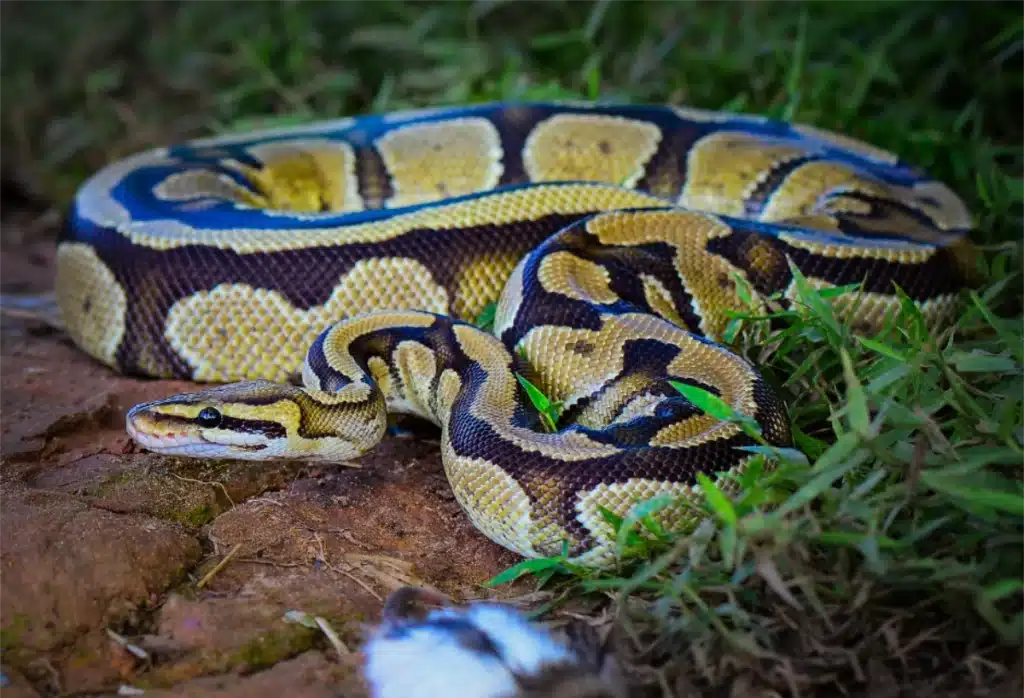Protecting your pets from snakes

When it comes to the most deadliest creatures in the world, finding Australia right at the top of that list really comes as no surprise. One danger that lurks very close to home in our backyards, gardens and surrounding bushland, is snakes. Often shy and elusive however, when encountered a bite can be fatal if the snake is venomous. Protecting our pets from them in the summer months is a must!
Australia is famous for having some of the world’s most deadliest snakes – including the Eastern Brown; and the Inland or Western Taipan, which is ranked as the most venomous snake in the world. With roughly 140 species of snake in Australia, 21 of the 25 most venomous snakes in the world are found here. So how do we protect our pets from a potential encounter with snakes? Here are some tips to consider:
Keep gardens clean and clear of clutter
Snakes are attracted to potential food and water sources and safe, quiet places to hide. To reduce the risk of snakes finding your backyard or property attractive, it’s vitally important to keep your grass cut, clean up any rubbish and clear away piles of wood or objects that snakes find appealing to hide in or under e.g. wood piles, under sheets of corrugated metal.
Avoid walking in bushland
Many suburban areas are surrounded by nature reserves or strips, and if walking your dog in these areas or close to bushland – especially near water during the summer months – please keep your dog on a short leash for easier reactive control and avoid long grassy areas. When it comes to cats however, especially those that roam, keeping them safe is a little trickier, however, you could consider keeping cats indoors with access to a snake-proof outdoor enclosure during the summer months. This is likely to be the best way to prevent any encounters with snakes.
When on walks, snakes usually try to avoid humans and generally slither away when they feel the vibration of you coming, but should a snake cross your path, it’s best to keep your dog away. Let’s also remember that most dogs have good hunting skills and natural instincts when it comes to sensing danger, and chances are that they can smell snakes. Some species actually give off a bad odour to warn off predators, and dogs being curious by nature, in turn will investigate, sense a threat and attempt to attack, which can often lead to a snake bite on the nose or in the face when sniffing in the long grass – something to be avoided at all costs.
Avoid areas with a water source
Snakes like to be near a constant supply of food and where is most of their food source generally found? Near water – the perfect hunting ground for rodents, small animals, birds and especially frogs. Avoiding these areas while walking your pet is advisable during the hot summer months.
Snake training
Some dog owners in Australia engage the services of a dog trainer who specialises in snake training. This is a rigorous programme which teaches your dog to identify a snake, see it as a threat to be avoided.
What to do if your dog sees a snake?
If your dog encounters a snake in the garden or on a walk, it’s best to do whatever it takes to keep them away from it, and if when necessary, call in a snake catcher for help.
That said, if you find an injured or dead snake in your garden and have dogs, check your pets for puncture wounds and take them to the vet immediately for a closer examination to ensure they haven’t been bitten while attempting to kill a snake. If your dog has been in close proximity to a snake, assume they have been bitten. Don’t risk it.
What to do if your dog is bitten by a snake?
- Remain calm and don’t panic – keep your pet calm and minimise movement to avoid the venom spreading through the lymphatic system
- Pets are usually bitten on or around the nose, face or front legs
- Where possible, try to make a note of the species of snake or a detailed description to try and identify it. This will help when administering an antivenom at the vet
- Carrying a snake bite kit for dogs is a good idea and can save your pets life in the event of an emergency. Apply a pressure immobilisation bandage if possible – similar to that used for humans – but do not use a tourniquet or restrict blood flow.
- Carry your pet to the car. Any restriction of movement helps.
- Get your pet to a vet IMMEDIATELY, and if possible, call the clinic to let them know you are on the way and make sure they keep antivenom in stock.
Signs that your pet has been bitten by a snake
A snake bite will be very difficult to see on your pet, as a snake’s fangs are razor sharp and very thin. When they strike, it is so quick and chances are that your pet may not have even felt it before it’s too late. Often dogs may collapse briefly after a snake bite, they may vomit, but then act completely normal again, which is indicative that they have received a lethal dose of venom. That said, it’s important to remember that pets can react differently.
Symptoms to look out for can include:
- Dilated pupils
- Weakness in hind legs
- Trembling and drooling
- Pale gums and difficulty breathing
- Pacing around anxiously
- Panting and vomiting
- Lose consciousness
- Bleeding from nose, mouth, bite site
If caught early, snake bites can be successfully treated with antivenom. So, it’s important to react quickly in the event of a bite. It could mean the difference between life and death. If you have any questions about your pet’s health and wellbeing, your local Vetmed team is here to help!
